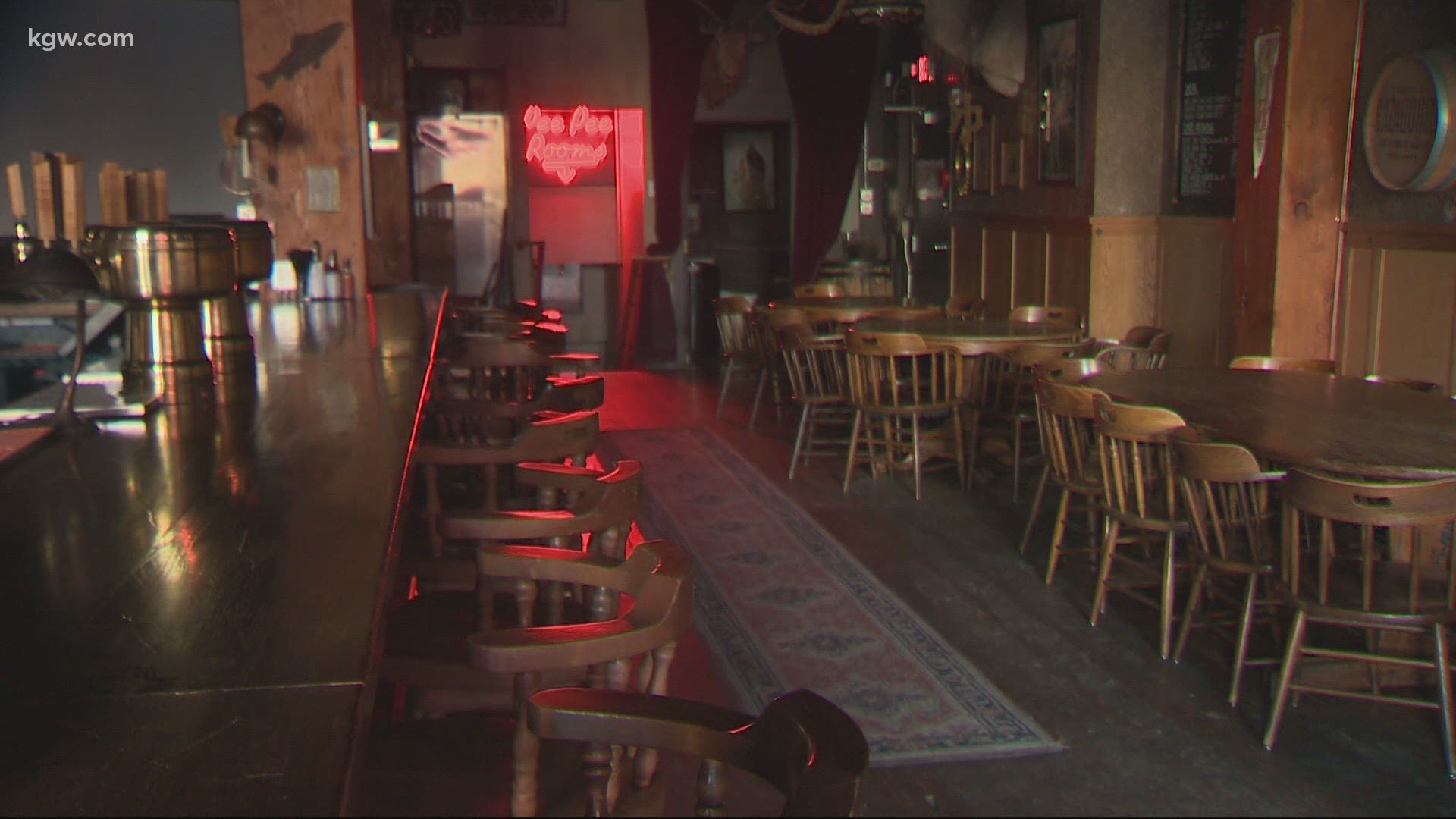PORTLAND, Ore. — At Venti's Café Salem, the past seven and a half months have not been easy. Restaurants have had to pivot at every new guideline and mandate the state has thrown at them.
First, restaurants could only do takeout and delivery when dine-in service wasn't allowed. Then, when dining rooms finally opened up, a limited capacity of only 100 people was allowed inside and that included staff.
"Lot of adjusting for us, lot of ups and downs and technically having to pivot and adjust our entire model of business, really ,several times," said Venti's general manager Scott Stolberg.
Stolberg said he had to lay off his 16 staff at the beginning of the pandemic but has since offered a job back to each of them. He said some didn't feel comfortable coming back to work.
To increase seating capacity, restaurants created outdoor spaces. At Venti's, Stolberg said they landscaped a portion of the restaurant's grassy area to create more seating.
Now that the rainy Pacific Northwest weather is here, outdoor seating won't be as desirable to many diners. At the same time, a new wave of COVID-19 cases has hit Oregon. Record-breaking cases have all come in the last seven days, with the highest one-day total of 805 cases reported on Wednesday.
The surge of new cases, hospitalizations, sporadic rate of spread, deaths and the daily metric rate led to the state to put a pause on five counties throughout Oregon.
The new measures will be in effect from Nov. 11-25 in Malheur, Marion, Multnomah, Jackson and Umatilla counties. They include the following:
- Urging all businesses to mandate work from home to the greatest extent possible.
- Pausing long-term care facility visits to protect staff and residents.
- Reducing maximum restaurant capacity to 50 people (including customers and staff) for indoor dining, with a maximum party size of six. Continuing to encourage outdoor dining and takeout.
- Reducing other indoor activity maximums capacity to 50 people (for example: gyms, fitness organizations/studios, bowling alleys, ice rinks, indoor sports, pools, museums).
- Limiting social gatherings to your household, or no more than 6 people if the gathering includes those from outside your household, reducing the frequency of those social gatherings (significantly in a two-week period), and keeping the same 6 people in your social gathering circle.
The reduction of restaurant capacity is yet another blow to the already hurting restaurant industry.
"We're coming from 76 seatable seats in the building and now we have to reduce that to 50 people in the building total," Stolberg said. "You're easily looking at a minimum of 10 employees on staff, so do the math there. We can only have about 40 customers and that basically means that a third of our restaurant will be unseatable."
The state's reason for waiting four days until this new mandate takes effect was to allow restaurants time to adjust and use product they had already purchased.
"We know that these are going to have tremendous impacts on businesses," said Dr. Dean Sidelinger with the Oregon Health Authority. "Businesses that have ordered food, planned for what's happening on the weekend, so we want to try and lessen that impact by giving some notice to businesses as they move forward."
The Old Spaghetti Factory has four locations in the Portland area. The South Waterfront location is the most affected during the two-week order. The building is around 12,000 to 15,000 square feet.
"One hundred people in our restaurant at 6-foot social distancing and that includes employees. We don't even fill up a quarter of the way," said Chris Hein, vice president of food and beverage for the Old Spaghetti Factory.
He says even with 6 feet of distancing between customers, they could hold upwards of 220 or so safely.
"Hearing the guidelines, what's a little frustrating is having them tell us how to do it without understanding our business model and how we can work together to do it together," Hein said.
Hein said he understands the state's position and agrees with what they are doing. He said it's not about profits, but keeping the customers happy when they see an empty dining room and wonder why they need to wait for a table.
"The safety of our guests and our team members is of the utmost importance to us," Hein said.
The Oregon Restaurant and Lodging Association (ORLA), which represents about 1,800 restaurants around the state, argues that the lack of workplace outbreaks connected to the restaurant industry doesn't warrant more restrictions.
In a statement emailed to KGW, ORLA CEO and President Jason Brandt said, “We are one of the largest employers in Oregon and the efforts being undertaken by our operators across the state is nothing short of monumental. The weekly data continues to prove the importance of controlled, regulated environments like restaurants as an alternative to private gatherings. We are literally making decisions that could drive us in the wrong direction as a state.”
The group had petitioned Gov. Kate Brown just last week to ease up restrictions on closing hours for restaurants and bars to midnight. Currently, all eating establishments must close by 10 p.m. Gov. Brown's office said she was not giving any consideration to their proposal due to a rise in cases.
Brandt's release went on to say that ORLA will be keeping track of all wages lost during the two-week order to show the impact of the new regulations.


